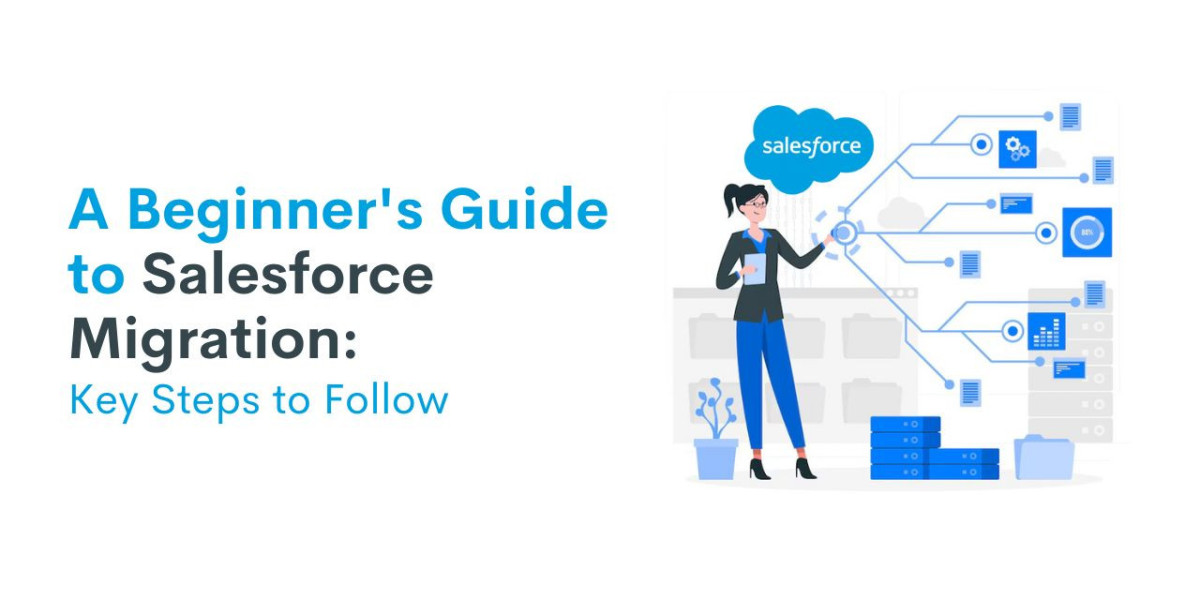Salesforce, a leading customer relationship management (CRM) platform, empowers businesses to manage customer interactions and streamline operations. However, migrating your existing data and functionalities to Salesforce can seem daunting. This guide provides a roadmap for a successful Salesforce migration, outlining the crucial steps involved.
1. Data Assessment and Scoping: Understanding Your Data Landscape
A successful migration hinges on a thorough understanding of your existing data. Here’s what this stage entails:
Data Quality Analysis: Evaluate the quality of your current data. Identify inconsistencies, duplicates, and missing information. Cleanse the data to ensure its accuracy and integrity in Salesforce.
Data Scope Definition: Determine which data needs to be migrated. Consider factors like historical data relevance and legal requirements. Not all data may be essential for Salesforce.
Data Dependency Mapping: Identify relationships between different data sets. Understand how linked records interact within your current system. This mapping is crucial for preserving data integrity during migration.
Example: Imagine migrating customer data from an old CRM. You’d analyze the data for duplicates (e.g., multiple entries for the same customer) and missing contact information (e.g., phone numbers). You might decide to migrate only the past three years of customer interactions for cost-effectiveness. Additionally, you’d map how customer records connect to sales order records to ensure these relationships are maintained in Salesforce.
2. Migration Strategy Development: Defining the Roadmap
With a clear grasp of your data, it’s time to craft a strategic migration plan. Here are the key considerations:
Migration Method Selection: Choose the appropriate data import method based on data volume and complexity. Options include the Salesforce Data Loader, Salesforce Import Wizard, or third-party integration tools.
User Field Mapping: Define how data fields from your source system will translate to corresponding fields in Salesforce objects. This mapping ensures data accuracy and facilitates user adoption.
Migration Staging Environment Setup: Establish a dedicated Salesforce environment (sandbox) to test the migration process and identify potential issues before migrating to production.
Security Configuration: Review and implement security protocols within Salesforce to ensure data privacy and access control.
Example: For a large-scale migration with complex data dependencies, a third-party data migration tool might be preferable over the Salesforce Data Loader due to its advanced features. User field mapping would involve matching fields like “Customer Name” in the old system to the “Contact Name” field in Salesforce. A sandbox environment would be created to test the migration of a small subset of data before migrating the entire dataset to the production Salesforce instance.
3. Data Preparation and Cleansing: Ensuring Data Integrity
Before embarking on the actual migration, ensure your data is in optimal shape:
Data Formatting: Format your data files according to Salesforce’s import specifications. This includes adhering to field data types, character limitations, and date/time formats.
Data Cleaning and Standardization: Address data inconsistencies like duplicate records, missing values, and formatting variations. Standardize data formats for consistency (e.g., using a consistent date format across all records).
Data Validation: Implement data validation rules to ensure data quality within Salesforce. These rules define acceptable formats and values for specific fields, preventing the entry of erroneous data in the future.
Example: Data formatting might involve converting dates from a legacy system format (e.g., DD/MM/YYYY) to Salesforce’s standard format (YYYY-MM-DD). Data cleaning could involve removing duplicate customer entries with the same email address. Data validation might involve setting a rule to ensure all email addresses follow a valid format (e.g., [email address removed]).
4. Migration Execution and Testing: A Phased Approach
With a well-defined plan and prepared data, you’re ready to execute the migration:
Phased Migration: Consider migrating data in phases, especially for large datasets. This allows for incremental testing and reduces the risk of errors impacting the entire system.
Data Import: Utilize the chosen import method to transfer data from your source system to the Salesforce staging environment.
Data Validation and Testing: Perform thorough testing of the migrated data in the sandbox environment. Verify data accuracy, completeness, and record relationships. Refine the migration process if necessary.
Example: A phased migration for a large customer base might involve migrating data by region or product category in stages. Data import could be done using a third-party migration tool designed for handling complex data structures. Testing would involve verifying if customer records are correctly migrated, along with their associated sales order and support ticket information.
5. Post-Migration Activities: Ensuring a Smooth Transition
The migration process doesn’t end with data transfer. Here’s what to consider after migration:
Data Cutover and User Adoption: Plan the transition from your old system to Salesforce. This involves defining a cutover date for switching users to the new platform and ensuring they’re adequately trained.
Data Monitoring and Quality Assurance: Continuously monitor data quality within Salesforce to identify and address any potential issues. Utilize data validation rules and reporting tools to maintain data integrity.
User Support and Feedback: Provide ongoing user support during the transition to Salesforce. Address user concerns and gather feedback to improve user experience and optimize the system.
Example: A data cutover plan might involve scheduling downtime for the old system while users are migrated and trained on Salesforce. Data quality assurance would involve running reports to identify missing data or inconsistencies and taking corrective actions. User support could include offering online help resources, live chat support, or dedicated training sessions.
6. Considering Salesforce Migration Services: Expert Guidance for Complex Migrations
For complex migrations involving large datasets, intricate data structures, or integrations with other systems, consider seeking assistance from a Salesforce Migration Service provider. These services offer expertise in the following areas:
Migration Planning and Strategy: Partner with a service provider to develop a comprehensive migration plan tailored to your specific needs and data landscape.
Data Extraction, Transformation, and Loading (ETL) Expertise: Leverage their expertise in using ETL tools to efficiently extract data from your source system, transform it for compatibility with Salesforce, and load it into the target environment.
Custom Development and Integration: If your migration involves custom applications or integrations with other systems, a Salesforce Migration Service provider can assist with the development and implementation of these integrations.
Change Management and User Adoption: They can guide you through the change management process to ensure user buy-in and successful adoption of Salesforce within your organization.
Benefits of Utilizing a Salesforce Migration Service:
Reduced Risk and Improved Efficiency: Migration specialists can help mitigate risks associated with data loss or errors during the migration process. Their experience streamlines the process, saving you time and resources.
Enhanced Data Quality: Their expertise in data cleansing and transformation ensures high-quality data is migrated to Salesforce, leading to better reporting and decision-making capabilities.
Faster Time to Value: By leveraging their expertise, you can achieve a quicker migration timeline and start reaping the benefits of Salesforce sooner.
Conclusion: A Successful Salesforce Migration Journey
By following these steps and considering the valuable support offered by Salesforce Migration Services, you can ensure a smooth and successful migration to Salesforce. A well-executed migration lays the foundation for improved customer relationship management, enhanced data insights, and ultimately, organizational growth.


